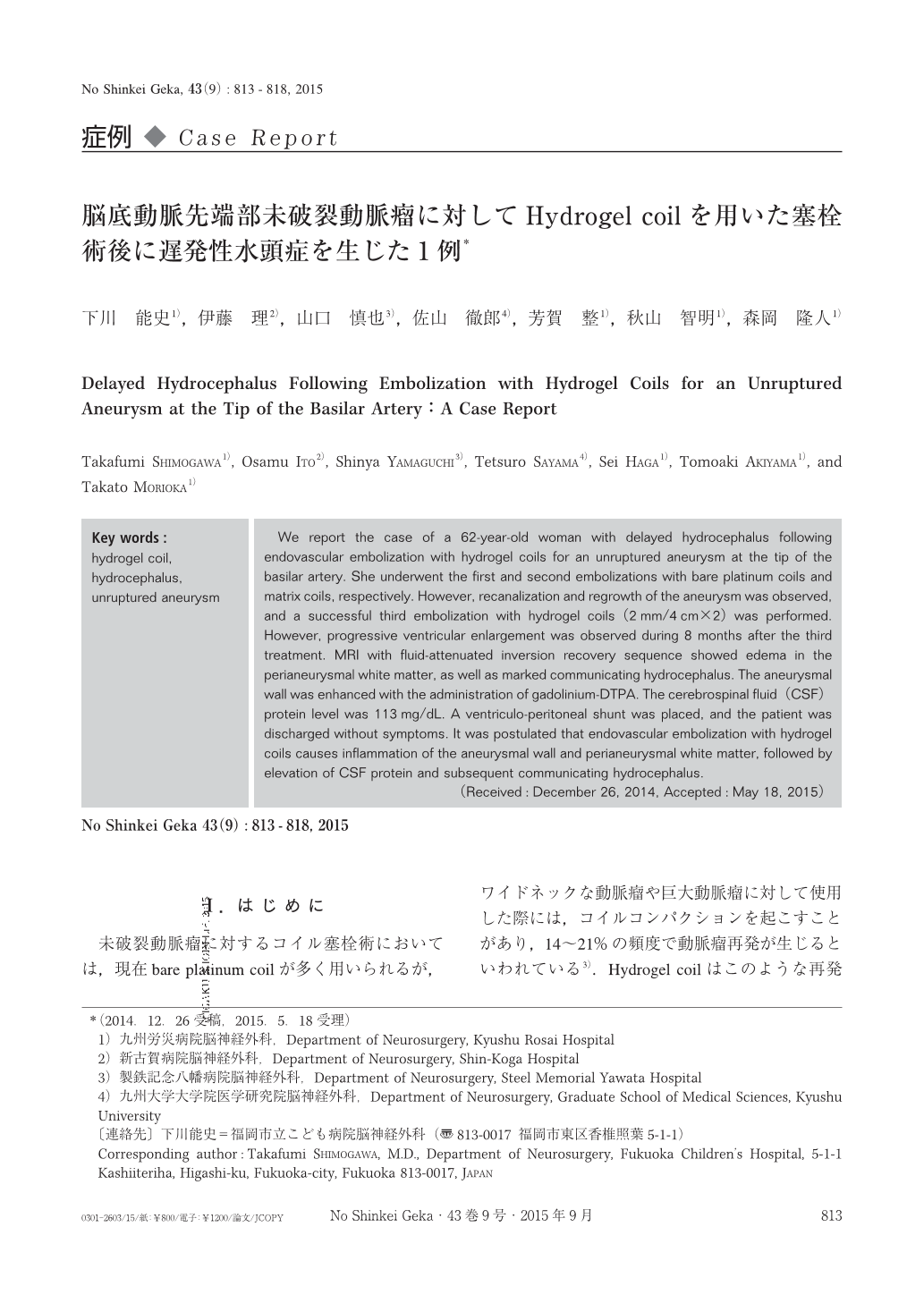Japanese
English
- 有料閲覧
- Abstract 文献概要
- 1ページ目 Look Inside
- 参考文献 Reference
Ⅰ.はじめに
未破裂動脈瘤に対するコイル塞栓術においては,現在bare platinum coilが多く用いられるが,ワイドネックな動脈瘤や巨大動脈瘤に対して使用した際には,コイルコンパクションを起こすことがあり,14〜21%の頻度で動脈瘤再発が生じるといわれている3).Hydrogel coilはこのような再発を減少させるために開発されたもので,コーティングされているhydrogelの膨潤によって,血管内腔を機械的に閉塞させるという特徴をもつ15).しかし,欧米においては,このhydrogel coilを用いた塞栓術後に遅発性水頭症の発生が稀ではあるが報告されている1-3,5,6,9,12).近年本邦においてもhydrogel coilの使用頻度が増えているが,hydrogel coil使用後の水頭症発生の報告はなく,広く認知する必要がある.
われわれも脳底動脈先端部の未破裂動脈瘤再発に対して,hydrogel coilを用いた塞栓術後に遅発性水頭症を生じた症例を経験したので,その発生メカニズムについて文献的考察を加えて報告する.
We report the case of a 62-year-old woman with delayed hydrocephalus following endovascular embolization with hydrogel coils for an unruptured aneurysm at the tip of the basilar artery. She underwent the first and second embolizations with bare platinum coils and matrix coils, respectively. However, recanalization and regrowth of the aneurysm was observed, and a successful third embolization with hydrogel coils(2mm/4cm×2)was performed. However, progressive ventricular enlargement was observed during 8 months after the third treatment. MRI with fluid-attenuated inversion recovery sequence showed edema in the perianeurysmal white matter, as well as marked communicating hydrocephalus. The aneurysmal wall was enhanced with the administration of gadolinium-DTPA. The cerebrospinal fluid(CSF)protein level was 113mg/dL. A ventriculo-peritoneal shunt was placed, and the patient was discharged without symptoms. It was postulated that endovascular embolization with hydrogel coils causes inflammation of the aneurysmal wall and perianeurysmal white matter, followed by elevation of CSF protein and subsequent communicating hydrocephalus.

Copyright © 2015, Igaku-Shoin Ltd. All rights reserved.


